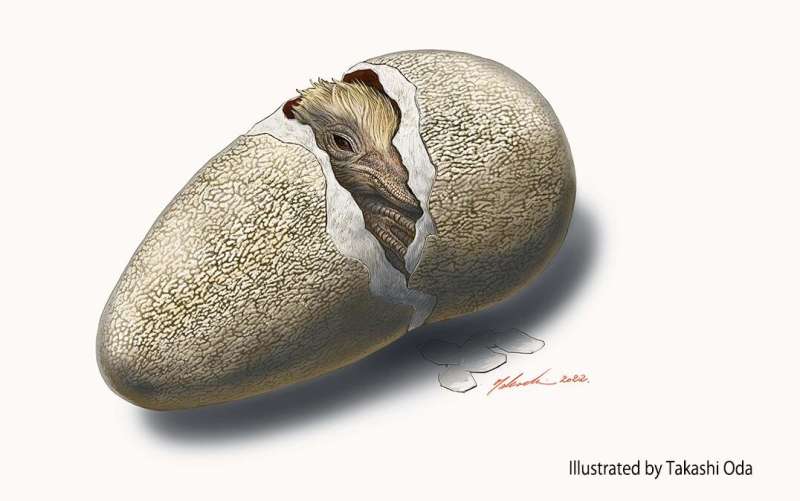New dinosaur egg species helps crack mystery of Cretaceous ecosystem in Japan

Giant skeletons aren't the only evidence that dinosaurs left behind. Tiny eggshell fragments can reveal aspects of Mesozoic ecosystems that fossilized bones and teeth fail to capture, especially because the skeletons of smaller animals were less likely to be preserved. Early Cretaceous fragments have been found—the oldest eggshell fossils ever found in Japan—and provide an important window into this dinosaur ecosystem.
In a new study published in Historical Biology, a University of Tsukuba research team investigated fossil eggshell fragments discovered in northern central Japan. Seven eggshell fragments and six eggshell impressions, collected between 1988 and 2009 from the Okurodani Formation in Gifu Prefecture, were described and classified into at least two types.
Two eggshell fragments belonged to the Testudoolithidae, a family of turtle egg fossils. Two eggshell impressions belonged to indeterminate egg groups. Most of the egg material, including five fragments and four impressions, belonged to a new egg genus and species, which the researchers named Ramoprismatoolithus okurai.
The researchers carefully analyzed the physical characteristics of the eggshell fragments and impressions, and performed phylogenetic analysis (which examines evolutionary development of a species, group of organisms or a particular characteristic they have) to determine the type of dinosaur most likely to have laid the eggs.
According to study co-author Professor Kohei Tanaka, "The shell fragments of Ramoprismatoolithus are characterized by a prismatic microstructure with branching ridges on the outer surface. Our analysis suggests affinity with the troodontids, a group of small non-avian theropod dinosaurs."
Fossils of the small raptor that laid the eggs have not yet been discovered in the Lower Cretaceous strata that yielded these fossils. As first author Rina Uematsu explains, "Based on the dimensions of the egg fragments, we calculated that the adults of the maniraptoran species that laid them would have weighed about 12 to 17 kilograms. The discovery of small maniraptoran eggs of this age in Japan also extends the temporal and geographic ranges of these small, non-avian theropods to the middle of the Early Cretaceous of the eastern margin of Asia."
The turtle eggshells reveal the presence of small-sized non-marine turtles that can be ascribed to previously recognized skeletal remains from the strata where they were found.
Together, these findings illustrate the value of even tiny, fragmentary eggshells in reconstructing ancient ecosystems, especially the presence of smaller animals that may be underrepresented in the skeletal fossil record.
More information: Rina Uematsu et al, Fossil eggshells from the Early Cretaceous Okurodani Formation, northern central Japan, Historical Biology (2022). DOI: 10.1080/08912963.2022.2142910
Provided by University of Tsukuba



















